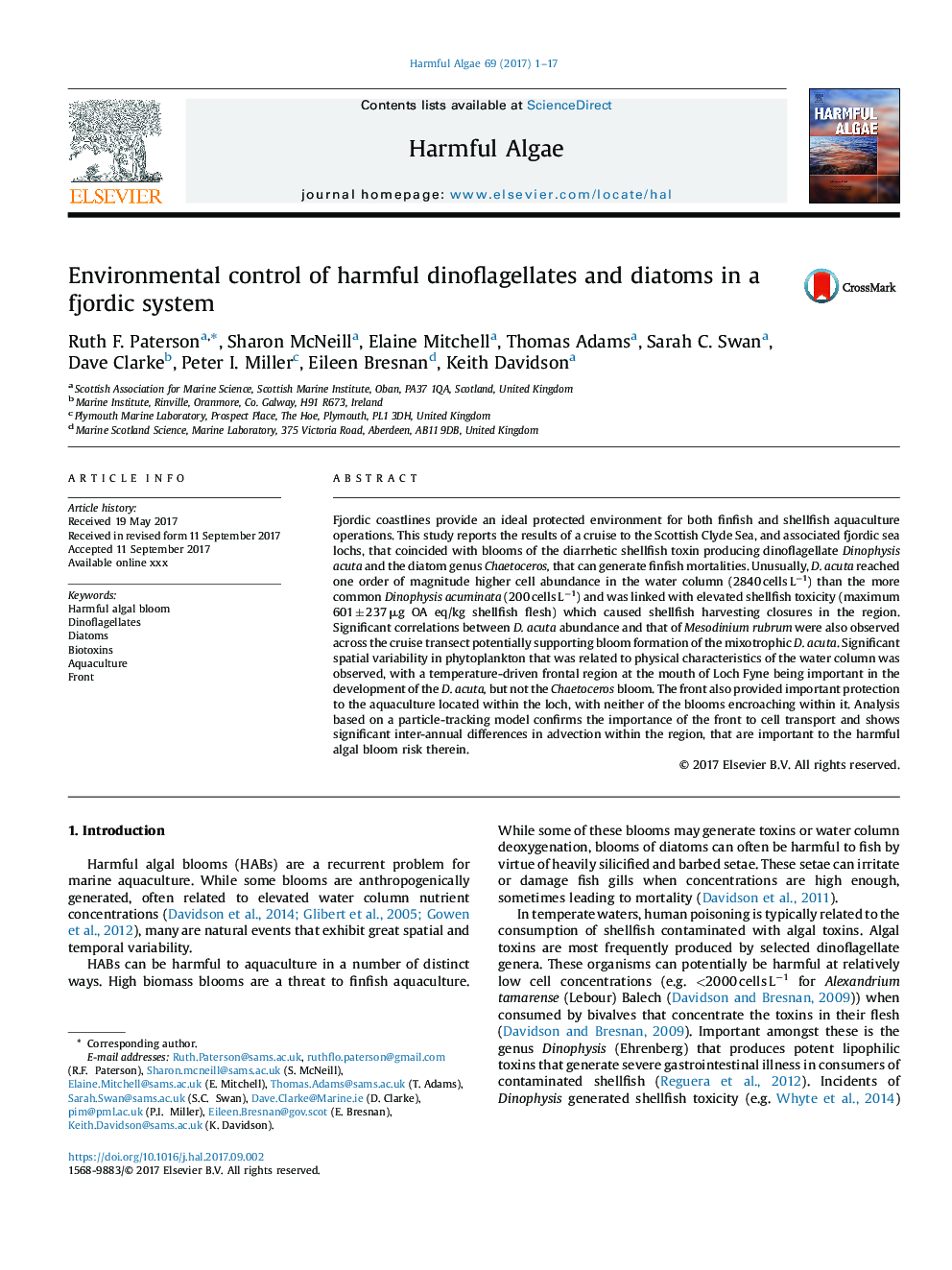| Article ID | Journal | Published Year | Pages | File Type |
|---|---|---|---|---|
| 5765682 | Harmful Algae | 2017 | 17 Pages |
Abstract
Fjordic coastlines provide an ideal protected environment for both finfish and shellfish aquaculture operations. This study reports the results of a cruise to the Scottish Clyde Sea, and associated fjordic sea lochs, that coincided with blooms of the diarrhetic shellfish toxin producing dinoflagellate Dinophysis acuta and the diatom genus Chaetoceros, that can generate finfish mortalities. Unusually, D. acuta reached one order of magnitude higher cell abundance in the water column (2840 cells Lâ1) than the more common Dinophysis acuminata (200 cells Lâ1) and was linked with elevated shellfish toxicity (maximum 601 ± 237 μg OA eq/kg shellfish flesh) which caused shellfish harvesting closures in the region. Significant correlations between D. acuta abundance and that of Mesodinium rubrum were also observed across the cruise transect potentially supporting bloom formation of the mixotrophic D. acuta. Significant spatial variability in phytoplankton that was related to physical characteristics of the water column was observed, with a temperature-driven frontal region at the mouth of Loch Fyne being important in the development of the D. acuta, but not the Chaetoceros bloom. The front also provided important protection to the aquaculture located within the loch, with neither of the blooms encroaching within it. Analysis based on a particle-tracking model confirms the importance of the front to cell transport and shows significant inter-annual differences in advection within the region, that are important to the harmful algal bloom risk therein.
Related Topics
Life Sciences
Agricultural and Biological Sciences
Aquatic Science
Authors
Ruth F. Paterson, Sharon McNeill, Elaine Mitchell, Thomas Adams, Sarah C. Swan, Dave Clarke, Peter I. Miller, Eileen Bresnan, Keith Davidson,
